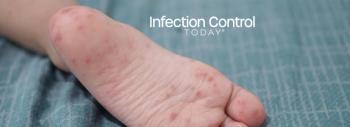
Optimal Laundering of Reusable Surgical Scrubs: A Comprehensive Review
Read a literature review that examines methods for laundering reusable surgical scrubs. Discover the importance of water temperature, disinfectants, and more in infection control.
Preventing health care-associated infections is a top priority for infection prevention personnel. Often overlooked in infection control is the possibility of harmful pathogens being transmitted through contaminated surgical scrubs worn by surgical personnel. These dedicated professionals are crucial in saving lives, but their clothing can unintentionally become carriers of microbes, endangering both patients and themselves.
Surgical personnel, including surgeons, nurses, and support staff, are on the frontlines of patient care, and their scrubs are exposed to a wide array of potential contaminants during surgeries and other medical procedures. Contaminated scrubs can serve as vectors for the transmission of infectious diseases, putting patients, hospital environments, and even the personnel's homes at risk.
To address this critical issue, a systematic literature review was conducted to identify the optimal methods for laundering reusable surgical scrubs by Je’nine Horn-Lodewyk and colleagues from the Department of Clinical Sciences, Faculty of Health and Environmental Sciences, Central University of Technology in Bloemfontein, South Africa.
“A limited amount of literature on healthcare professionals’ knowledge, education, and training on optimal laundering methods could be located,” the investigators wrote. “Furthermore, a lack of knowledge among theatre staff on home laundering of their scrubs has been reported. Health care professionals working in an active theatre environment lack information about infection management in the theatre environment.”
This comprehensive analysis sought to provide health care professionals and hospital management with clear guidelines for effective scrub decontamination. The research established a direct correlation between water temperature and washing cycle length. Higher water temperatures were found to necessitate shorter washing cycles. After laundering in low or medium water temperatures, tumble drying and ironing should follow. Importantly, regardless of water temperature, the inclusion of a disinfectant in the washing process is crucial to ensure effective decontamination.
Horn-Lodewyk and colleagues found that there is no consensus among article authors on the most effective method for laundering surgical scrubs. Some articles provide only vague information about the required water temperature without specifying the exact degrees, disinfectants, and duration needed. This incomplete information does not help to fill the knowledge gap about how personnel can optimally launder their contaminated scrubs at home without contaminating the environment.
“The Association of Surgical Technologists (AST) proposed a set of guidelines compiled from the literature for best practices for laundering surgical scrubs,” Horn-Lodewyk and colleagues wrote in the review. “In the guidelines, the AST emphasizes that health care delivery organizations must develop and approve policies and protocols for laundering scrubs. The AST guidelines do not recommend home laundering as it cannot be properly monitored. Should [surgical] theatre personnel be required to perform home laundering, the employer should provide them with information on infection control and laundering guidelines. The AST guidelines also provide information on the handling, storing, and transporting of [surgical] scrubs to prevent contamination with microorganisms."
The investigators continue, “Hence, hospitals have set decontamination laundering protocols related to the infection control of scrubs worn by [surgical] personnel. These protocols should focus on scrubs being laundered at the hospital or at a hospital-approved facility and the manner in which the soiled scrubs are transported to and from the washing facility. Some hospitals allow staff to launder their scrubs at home, even though washing practices may vary.”
The results obtained from
Newsletter
Stay prepared and protected with Infection Control Today's newsletter, delivering essential updates, best practices, and expert insights for infection preventionists.






